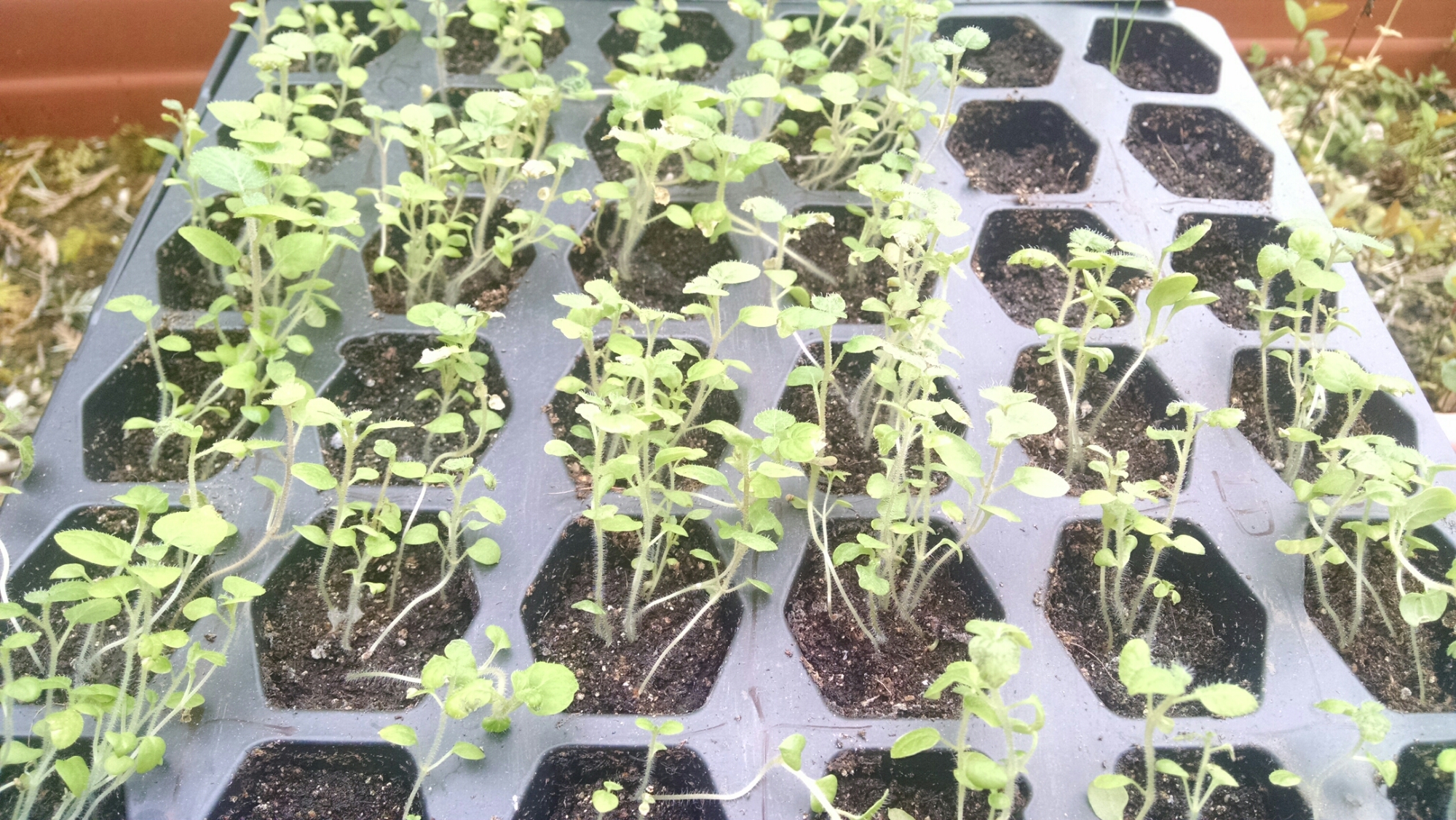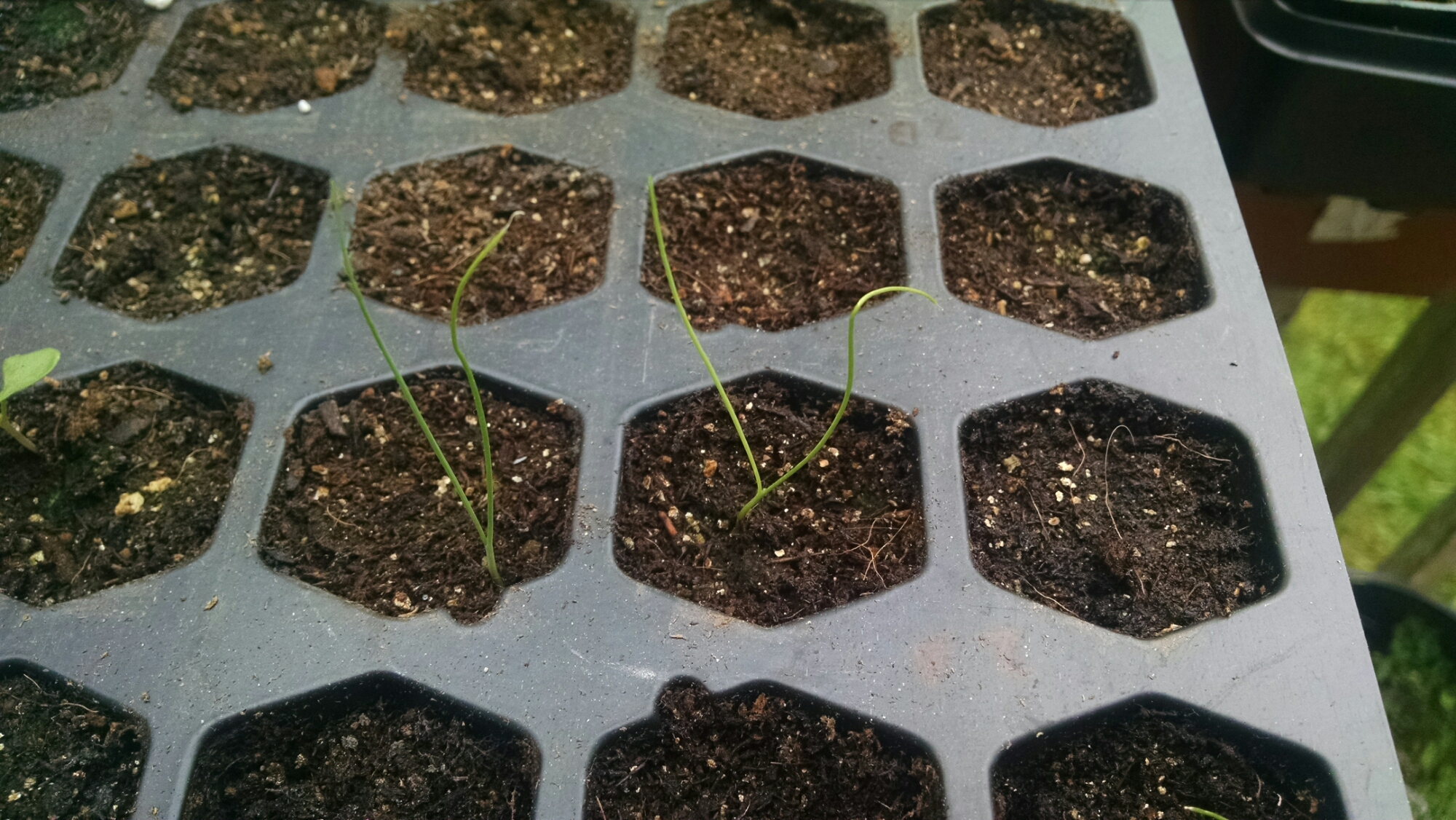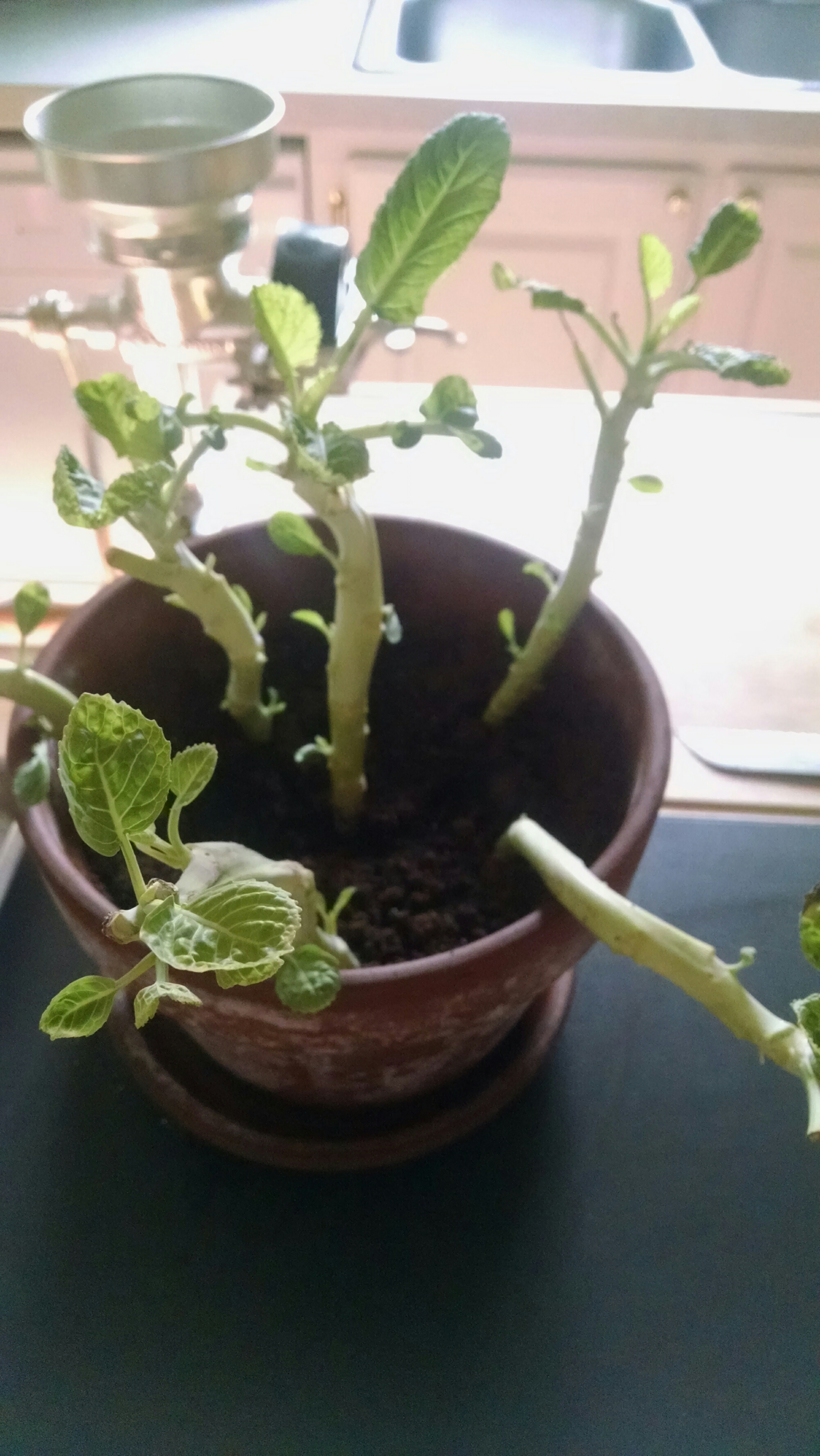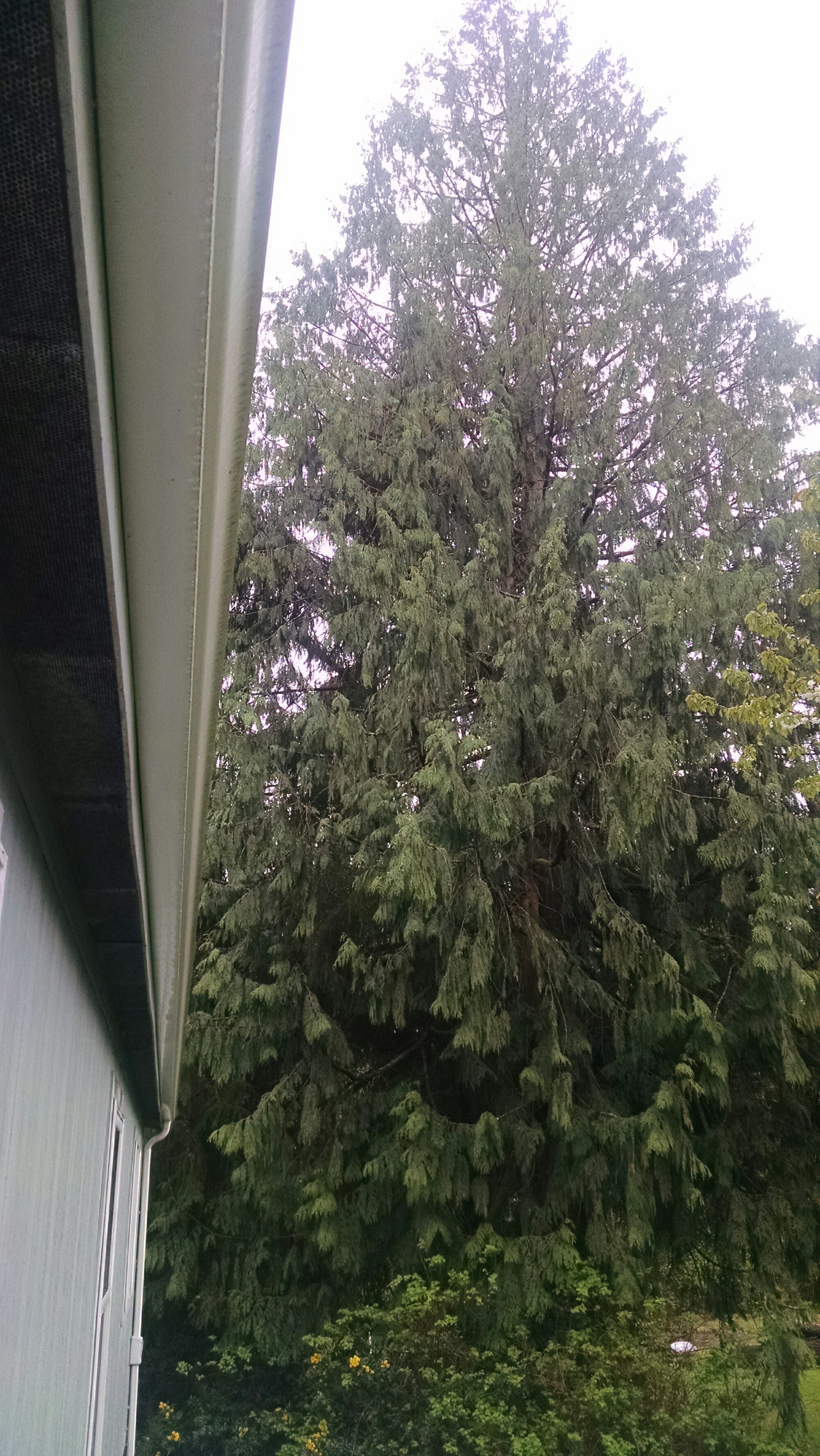Twists on some ordinary crops
Tree collards, potato onions, perennial wheat, potatoes and garlic from seeds, and Douglas Fir, Cedar, and Western Hemlock all have a place in our food garden this year. These all are familiar, with a twist. We’ll be sharing seeds, starts, and cuttings if you want any. Just let me know, and when I have extras I’ll give them to you. By the end of this season we should have a lot of seeds, tubers, cuttings and more to share.
Alrighty, on to the details…
Perennial wheat
In some ways this is a very plain crop. Wheat is one of the most prominent staples in all of human history. The twist is that it is perennial, not annual. We will plant it, and the plants that survive the first year will form clumps and keep coming back year after year after year. The reason we’re growing this is because first, I want to grow at least a little bit of all the foods we eat. There are many reasons for growing the perennial strain. Perennials have deeper and longer-lived roots than annuals. This helps build a more permanent, complex soil and lets the crops access nutrients and water that are deeper down. They should be a more stable crop through difficult years, especially through dry summers.
The perennial in the below picture isn’t the same as what I’m growing, but hopefully the result will be similar:
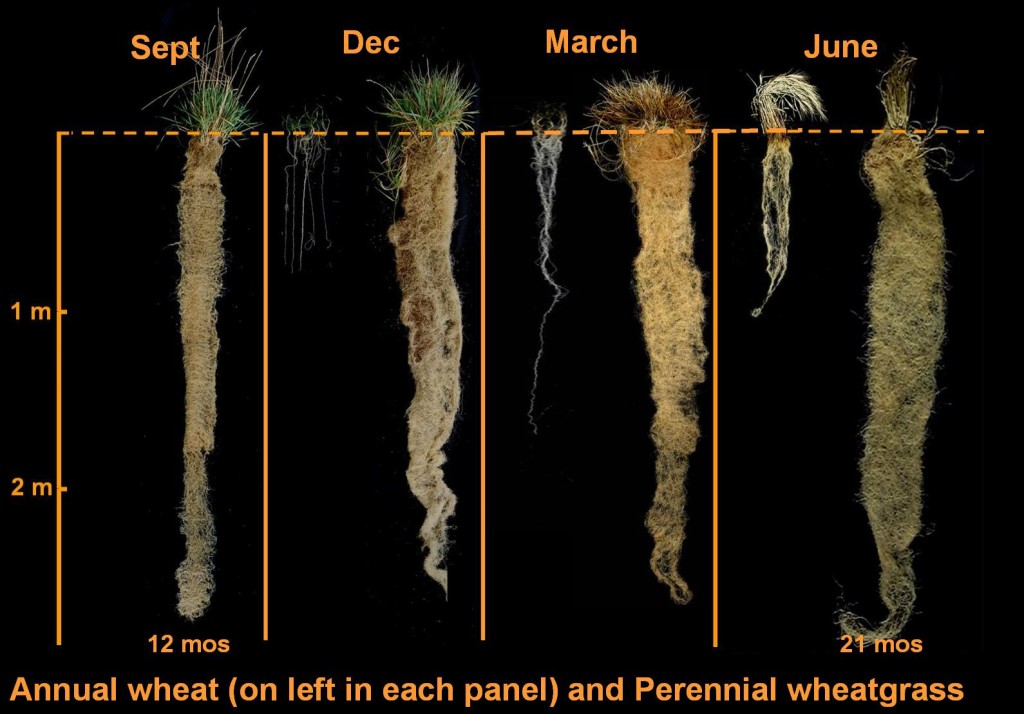
I got this from Caleb Warnock’s Renaissance Seeds.
Potatoes and garlic from seed
Potatoes and garlic are almost always propagated clonally. You plant a clove of garlic, or a chunk of a potato that has a few eyes on it. This is convenient because the crop turns out genetically identical to the planting material, so you know exactly what you will get. Where this is not so great is that you have no genetic diversity. If conditions change, or pests come along, your entire crop can easily be wiped out. Also, just like with annual wheat, you have to reserve a significant fraction of your yield for planting the next year.
The twist here is that garlic and potatoes can be grown from seeds formed from flowes. If we have seeds, we can eat the whole crop if we want to (although we probably will still leave some in the ground for the next year). The genetic diversity and crossings over will help them adapt to our location. And in a sense, every seed I plant of garlic and potato will be a variety never before grown. It’ll be fun to dig them up and see what grew.
I got these from Joseph Lofthouse.
Tree collards
We like collard greens at our house, and the twist here is growing them as a perennial tree, rather than an annual plant. Or at least if not a tree, hopefully a roughly 6-12 foot tall shrub. This should produce a lot of greens with a small footprint, and will probably be harvestable year round in our climate. We’ll see!
It doesn’t often produce seed, and from what I gather the seed either doesn’t come true or is infertile, so it is propagated by cuttings. If I can ever get mine to flower I’ll see what I can do about breeding some out. That’s a project for the future…
I got these from a seller on eBay. Just search for “tree collards”, there are a number of options.
Potato onions
These were a variety of onion popular with homesteaders of old, but are less convenient for machine harvesting so they fell out of common use with the industrialization of onion fields. They are onions, with the twist that they divide like garlic. This means that instead of needing to go through a biennial cycle to get seeds, and then trying to get starts from seeds, you can simply leave part of the harvest in the ground as seed for the next year. Yet they do grow readily from seed, so that can also be done to keep adaptation moving forward.
This may seem a bit at odds with what I said about growing garlic and potatoes from seed. One difference is that these are easily and regularly grown from seed, so they are not a mono-clonal population to begin with. Maybe the more important and fundamental difference, though, is opening up options. If I can grow things from seed, or clonally, then I can do both. I can keep the genetic diversity high, and adaptation moving forward, and also have underground roots, tubers, and bulbs ready to spring out.
I also got these from Caleb Warnock: potato onions.
Hemlock, red cedar and Douglas fir
The twist here is regarding these as foodcrops, rather than lumber.
It’s cheating a little bit to include these as foodcrops – but only a little. We’ve got a few of these trees on our property, and they provide a lot of benefit. They provide habitat, fresh air, and shade for cool summer breezes. They also hog a lot of sunlight, and perform a lot of photosynthesis whose products get locked up in cellulose. Bah.
But here’s one weird old trick for eating cellulose: feed it to mushrooms. Conifers are the preferred food for different kinds of tasty mushrooms, and when these trees are ready to shuffle off their mortal coil, we’ll simply inoculate their stumps and maybe some of their branches, and enjoy the product of all that sunshine they kept from the vegetables. Probably fried with garlic.
It may seem strange to think of eating our trees. But that is more or less what we do when we eat mushrooms. And if that is the case, it isn’t too far off to look at them, and consider them a crop. It is a humbling privilege to be stewarding a crop in our garden that has been there for decades already, and won’t be ready for harvest for decades or a century yet. And besides, this gives me a good answer when my kids point at a tree and ask if we can eat it.
I got these when we got our place…
—
Last week I mentioned a talk by Larry Korn that I was planning to attend. I did indeed go, and it was fantastic. I’ll have the notes for that in an upcoming post.

